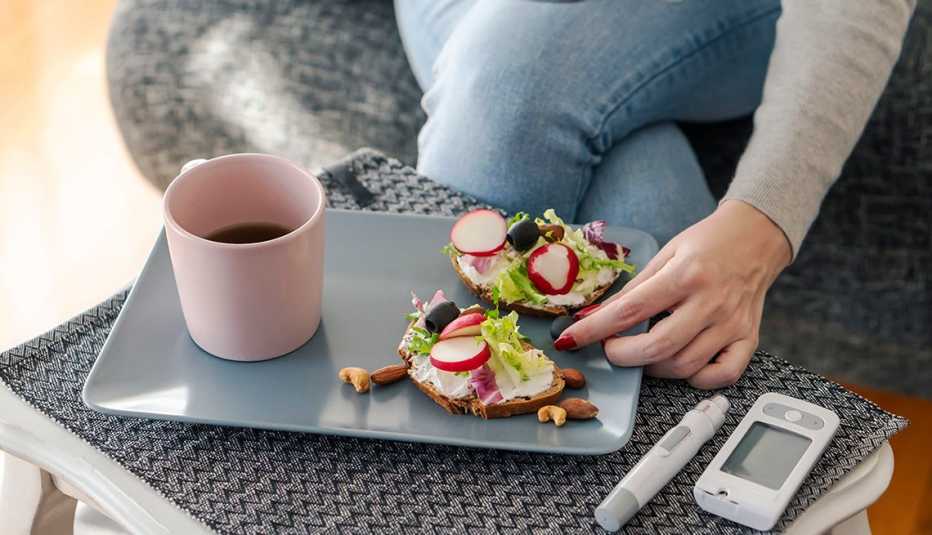Staying Fit


Snacking often gets maligned as an unhealthy habit, but it can have an upside, particularly if you’re one of the more than 37 million Americans with type 2 diabetes.
For many people, snacking can help prevent overeating at meals and keep energy levels steady throughout the day, says Erin Palinski-Wade, a registered dietitian and author of 2 Day Diabetes Diet. “For people with diabetes specifically,” she says, “snacking can be a great way to help manage appetite and space carbohydrates out during the day. Eating frequently may also help prevent the blood sugar lows that can occur when you haven’t eaten for an extended period of time.”


AARP Membership— $12 for your first year when you sign up for Automatic Renewal
Get instant access to members-only products and hundreds of discounts, a free second membership, and a subscription to AARP the Magazine.
Most people have experienced some of the effects of wonky blood sugar levels: sudden lethargy, mood swings or ravenous hunger. People with type 2 diabetes are more sensitive to these effects, as well as long-term risks including vision problems, nerve damage, and heart and kidney issues.
That’s because a diabetic pancreas fails to release insulin, or at least enough of it to deal with the aftermath of eating. Normally, your body breaks food down into glucose, a sugar and the main energy source for your cells. Insulin helps deliver that energy to cells; without that hormone, or enough of it, the sugar stays in your blood. Chronically elevated blood sugar can cause organ and tissue damage over time.
Previously, when a short-acting injectable insulin was the only option for people with type 2 diabetes, experts pushed a three-meal, two-snack-a-day regimen, says Amy Kimberlain, a registered dietitian and spokesperson for the Academy of Nutrition and Dietetics. But now that there are other injectables and oral medications that work differently, those restrictions have loosened up. Still, she says, timing and consistency are key when it comes to managing blood sugar and, therefore, when eating.
Eating at regular intervals throughout the day is one key — Palinski-Wade recommends her clients with type 2 diabetes have some food every three to four hours. And, ideally, roughly the same amount of food. Big meals are a no-no when you have diabetes because they dump far too much glucose in your system at once.
Skipping meals is ill-advised for similar reasons — your blood sugar will plummet. Sensible snacking can help in both scenarios. Palinski-Wade's helpful guide for “sensible”: Make sure your snacks are no more than one-third to one-half the calories of your meals. So if you typically eat 500 calories at a meal, your snacks should be between 160 and 250 calories each.
Of course, what you eat matters too. Your body digests carbohydrates, proteins and fats at different rates. Simple carbs — things like refined white bread and processed sugary snacks — turn into glucose the fastest, flooding your system with more sugar than it can handle. Ideally, you want a steady drip of carbs throughout your day, says Kimberlain.
Need some healthy snack inspiration? Check out these expert-recommended suggestions for whatever you’re craving:




































































More From AARP
Is an ‘Ozempic Pill’ the Future of Weight Loss Medications?
Researchers are working to expand the pool of options
Your Weight In Your 50s: What It Means for Your Health
What those extra pounds really mean to our health and longevity — and how to deal with them effectively
7 Simple Ways to Lower Your Blood Sugar
How to bring your A1C back to a healthy range and avoid type 2 diabetes. Plus, could ice cream help?